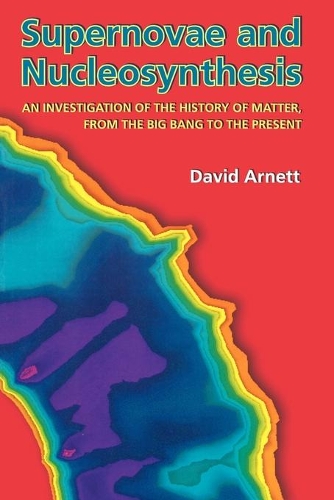
Supernovae and Nucleosynthesis: An Investigation of the History of Matter, from the Big Bang to the Present
(Paperback)
Publishing Details
Supernovae and Nucleosynthesis: An Investigation of the History of Matter, from the Big Bang to the Present
By (Author) David Arnett
Princeton University Press
Princeton University Press
4th June 1996
United States
Classifications
Professional and Scholarly
Non Fiction
Cosmology and the universe
523.1
Physical Properties
Paperback
496
Width 197mm, Height 254mm
851g
Description
This book investigates the question of how matter has evolved since its origin in the Big Bang, from the cosmological synthesis of hydrogen and helium to the generation of the complex set of nuclei that comprise our world and our selves. A central theme is the evolution of gravitationally contained thermonuclear reactors, otherwise known as stars. Our current understanding is presented systematically and quantitatively, by combining simple analytic models with new state-of-the-art computer simulations. The narrative begins with the clues (primarily the solar system abundance pattern), the constraining physics (primarily nuclear and particle physics), and the thermo-nuclear burning in the Big Bang itself. It continues with a step-by-step description of how stars evolve by nuclear reactions, a critical investigation of super-nova explosion mechanisms and the formation of neutron stars and of black holes, and an analysis of how such explosions appear to astronomers (illustrated by comparison with recent observations). It concludes with a synthesis of these ideas for galactic evolution, with implications for nucleosynthesis in the first generation of stars and for the solar system abun
Reviews
"The book is delightful reading... the best available source of material on supernova physics for the graduate student."--A.G.W. Cameron, Nature "This well-illustrated and well-referenced volume is an extremely valuable addition to the astronomical literature."--New Scientist
Author Bio
David Arnett is a Regents Professor at the University of Arizona and an astrophysicist at the Steward Observatory. He has been an active contributor to the development of a quantitative understanding of the birth of the elements and the death of stars, with particular interests in the use of computers in science, and in the interface between physics and astronomy.
